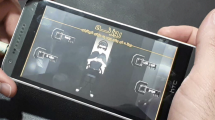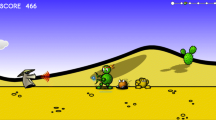Abstract
SoniFight is utility software designed to provide additional sonification cues to video games, especially those in the fighting game genre, in order to enhance their accessibility for players who are blind or visually impaired. While the software is distributed with configuration files that add sonification to a number of popular video games, configuration files may also be created or modified to provide user-customisable sonification to a wide variety of other games that run on the Windows platform through its built-in user interface. SoniFight is released under the MIT software license and the source code is freely available for use and modification at: https://github.com/feduni/sonifight.






Similar content being viewed by others
References
AudioGames. (2017). AudioGames, your resource for audiogames, games for the blind, games for the visually impaired! Accessed October 2, 2017, http://audiogames.net.
Audio Quake. (2017). The AGRIP project. Accessed October 2, 2017, from http://agrip.org.uk/.
Cheat Engine memory scanner. (2017). Cheat engine. Accessed October 2, 2017, from http://cheatengine.org.
Cheng, C. I., & Wakefield, G. H. (1999). Introduction to head-related transfer functions (HRTFs): Representations of HRTFs in time, frequency, and space. In Audio engineering society convention 107. Audio Engineering Society.
Desurvire, H., & Wiberg, C. (2008). Master of the game: Assessing approachability in future game design. In CHI’08 extended abstracts on human factors in computing systems (pp. 3177–3182). ACM.
Eurogamer. (2016). Meet the blind gamer with a Killer instinct. Accessed October 2, 2017, from http://www.eurogamer.net/articles/2016-03-29-meet-the-blind-gamer-with-a-killer-instinct.
Gingold, Y. I. (2006). From rock paper scissors to street fighter II: Proof by construction. In ACM SIGGRAPH symposium on Videogames (pp. 155–158). ACM.
irrKlang audio library. (2017). irrKlang—An audio library for C++, C#,.NET and high level 3D and 2D sound engine. Accessed October 2, 2017, from http://www.ambiera.com/irrklang/.
irrKlang audio library API documentation. (2017). Forced streaming threshold property. Accessed October 2, 2017, from http://www.ambiera.com/irrklang/docunet/IrrKlang.ISoundSource.ForcedStreamingThreshold.html.
Kaldobsky, J. (2017). Aprone’s accessible software and games. Accessed October 2, 2017, from https://p9.secure.hostingprod.com/@www.kaldobsky.com/ssl/audiogames.php.
Li, L., Just, J. E., & Sekar, R. (2006). Address-space randomization for windows systems. In Computer security applications conference, 2006. ACSAC’06. 22nd annual (pp. 329–338). IEEE.
Microsoft. (2017). Multilingual app toolkit—visual studio marketplace. Accessed October 2, 2017, from https://marketplace.visualstudio.com/items?itemName=MultilingualAppToolkit.MultilingualAppToolkit-18308.
Microsoft Multilingual App Toolkit. (2017). Multilingual app toolkit. Accessed October 2, 2017, from https://developer.microsoft.com/en-us/windows/develop/multilingual-app-toolkit.
Miller, M., Johnson, K., & Wehnus, Llc. (2009). Method of address space layout randomization for windows operating systems. U.S. Patent 7,546,430.
OpenAL Soft—Software 3D Audio. (2018). OpenAL Soft—Software 3D Audio. Accessed March 27, 2018, from http://kcat.strangesoft.net/openal.html.
Peter, B. L. M. (2017). Scientific publications based on use of The vOICe. Accessed October 2, 2017, from https://www.seeingwithsound.com/literature.htm.
Smith, B. A., & Nayar, S. K. (2018). The RAD: making racing games equivalently accessible to people who are blind. In Proceedings of the 2018 CHI conference on human factors in computing systems (CHI 2018).
tolk screen reader abstraction library. (2017). dkager/tolk: Screen reader abstraction library. Accessed October 2, 2017, from https://github.com/dkager/tolk.
Vallejo-Pinto, J. Á., Torrente, J., Fernández-Manjón, B., & Ortega-Moral, M. (2011). Applying sonification to improve accessibility of point-and-click computer games for people with limited vision. In Proceedings of the 25th BCS conference on human–computer interaction (pp. 449–454). British Computer Society.
Wikipedia list of video game emulators. (2017). List of video game emulators—Wikipedia. Accessed October 2, 2017, from https://en.wikipedia.org/wiki/List_of_video_game_emulators.
Yuan, B., & Folmer, E. (2008). Blind hero: Enabling guitar hero for the visually impaired. In Proceedings of the 10th international ACM SIGACCESS conference on computers and accessibility (pp. 169–176). ACM.
Yuan, B., Folmer, E., & Harris, F. C. (2011). Game accessibility: A survey. Universal Access in the Information Society, 10(1), 81–100.
Acknowledgements
Many thanks to SightlessKombat for his insight into the issues experienced and techniques used by visually impaired players to successfully compete in fighting games, and to my PhD supervisors Peter Vamplew, Cameron Foale and Phil Smith for their support and guidance during the creation of the SoniFight software.
Author information
Authors and Affiliations
Corresponding author
Ethics declarations
Conflict of interest
The authors declare that they have no competing interests.
Additional information
All editorial decisions for this article, including selection of reviewers and the final decision, were made by guest editor Dr. Michael Heron.
About this article
Cite this article
Lansley, A., Vamplew, P., Foale, C. et al. SoniFight: Software to Provide Additional Sonification Cues to Video Games for Visually Impaired Players. Comput Game J 7, 115–130 (2018). https://doi.org/10.1007/s40869-018-0059-6
Received:
Accepted:
Published:
Issue Date:
DOI: https://doi.org/10.1007/s40869-018-0059-6




